 |
 |
 |
| |
Lean Mash Means Higher Mortality-But Less Decompensation-in US Veterans
|
| |
| |
AASLD 2023 nov 10-14
listen to live session
https://www.aasld.org/the-liver-meeting
AASLD 2023, The Liver Meeting, November 10-14, 2023, Boston
Mark Mascolini
Compared with nonlean veterans with compensated cirrhosis and metabolic dysfunction-associated steatohepatitis (MASH), lean MASH veterans ran a 61% higher risk of all-cause mortality-but a 33% lower risk of hepatic decompensation [1]. Lean and nonlean MASH veterans had equally high risks for cardiovascular causes of death.
Previous research yielded conflicting results when exploring the impact of lean status in MASH on critical outcomes, including cardiovascular events, hepatic decompensation, and death. But many of these studies were small and cross-sectional.
To get a better look at outcomes with lean versus nonlean MASH, Yale University's Basile Njei and colleagues retrospectively analyzed extensive Veterans Administration data to compare the impact of lean and nonlean compensated cirrhosis newly diagnosed from 2008 through 2021. Lean meant a body mass index (BMI) below 25 kg/m2 (or 23 kg/m2 for Asians) in the 12 months before cirrhosis diagnosis. The primary outcome was hepatic decompensation, and secondary outcomes were all-cause mortality and major adverse cardiovascular events: myocardial infarction, cardiac arrest, stroke, heart failure, and atrial fibrillation.
After eliminating veterans with Child-Turcotte-Pugh cirrhosis severity B or C, prior decompensation, non-MASH causes of cirrhosis, or missing baseline BMI data, the researchers wound up with 15,974 study participants, 1731 of them lean and 14,243 of them nonlean. The lean group was significantly older (median 70 vs 67 years, P < 0.001), had a significantly lower proportion of whites (62% vs 73%, P < 0.001), a significantly higher proportion of current smokers (31% vs 20%, P < 0.001), a significantly lower proportion with diabetes (45% vs 73%, P < 0.001), and a significantly lower proportion taking a statin (41% vs 55%, P < 0.001). Most veterans in both groups, 95%, were men.
Multivariable Cox proportional hazard models accounting for the competing risks liver transplantation and death determined that having lean MASH versus nonlean MASH was associated with a 61% higher risk of all-cause mortality (hazard ratio [HR] 1.61, 95% confidence interval [CI] 1.48 to 1.75, P < 0.001) but a 33% lower risk of hepatic decompensation (HR 0.67, 95% CI 0.58 to 0.77, P < 0.001). There was a trend toward lower risk of a major cardiovascular outcome with lean MASH (HR 0.84, 95% CI 0.70 to 1.01, P = 0.07).
In the same kind of model, men ran a 23% higher risk of all-cause mortality than women (HR 1.23, 95% CI 1.02 to 1.48, P = 0.03) and an 18% higher risk of hepatic decompensation (HR 1.18, 95% CI 1.00 to 1.40, P = 0.051). Older age was associated with higher risk of death (HR 1.06, 95% CI 1.06 to 1.06, P < 0.001) and major cardiovascular outcomes (HR 1.03, 95% CI 1.03 to 1.04, P < 0.001) but with a lower risk of decompensation (HR 0.99, 95% CI 0.99 to 0.99, P < 0.001).
Compared with white veterans, black veterans had a 17% lower risk of death (P = 0.002) while Asians did not differ significantly from whites in mortality risk. Having diabetes raised all-cause mortality risk 25% (P < 0.001), risk of hepatic decompensation 63% (P < 0.001), and risk of a major cardiovascular outcome 42% (P < 0.001). Higher (worse) MELD-Na score (which evaluates end-stage liver disease for transplant planning) was independently associated with an 8% greater risk of death (P < 0.001) and a 3% greater risk of a major cardiovascular event (P = 0.002), Compared with never smoking, current smoking upped the death risk 21% (HR 1.21, 95% CI 1.11 to 1.31, P < 0.001), while former smoking tended to raise death risk (HR 1.07, 95% CI 1.00 to 1.14, P = 0.06). Current smoking tended to boost cardiovascular event risk (HR 1.14, 95% CI 0.99 to 1.31, P = 0.06).
Risk of liver- or cardiovascular-related mortality over up to 120 months of follow-up did not differ by lean status. But veterans with lean MASH cirrhosis had a doubled risk of nonliver/noncardio mortality during follow-up (HR 2.08, 95% CI 1.80 to 2.40, P < 0.001).
Any analysis of a US veterans cohort carries with it the caveat that this overwhelmingly male group receiving free health care may not represent other US populations with MASH cirrhosis.
Njei and collaborators suggested that future research on mortality in people with lean MASH should analyze potential drivers not related to the liver or cardiovascular systems, such as cancer and genetics.
Reference
1. Njei B, Mezzacappa C, John BV, et al. Mortality, hepatic decompensation, and cardiovascular outcomes in lean vs. non-lean MASH cirrhosis: a Veterans Affairs cohort study. AASLD 2023, The Liver Meeting, November 10-14, 2023, Boston.
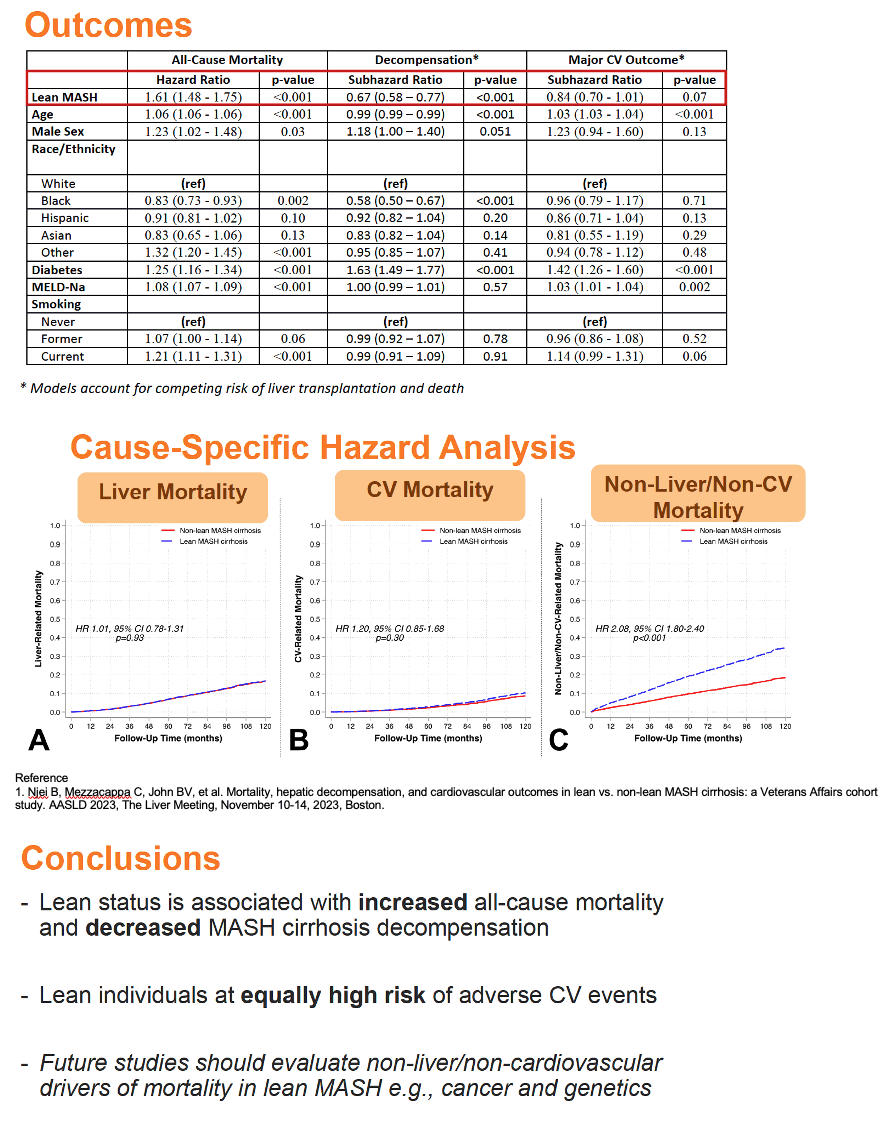
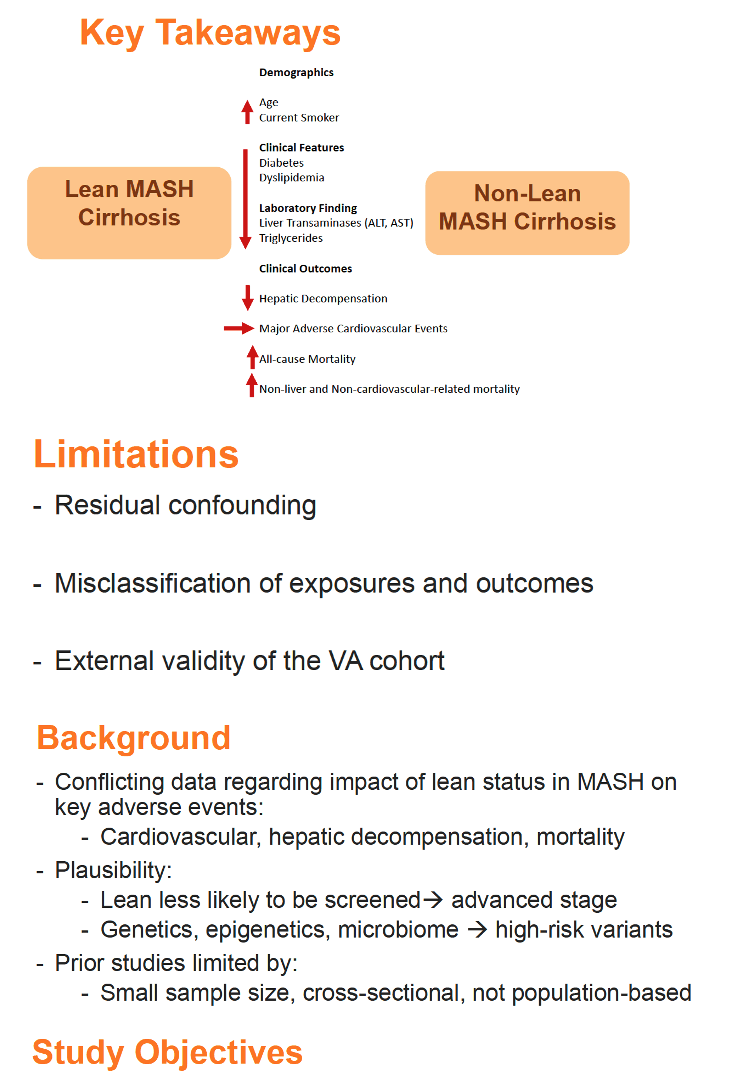
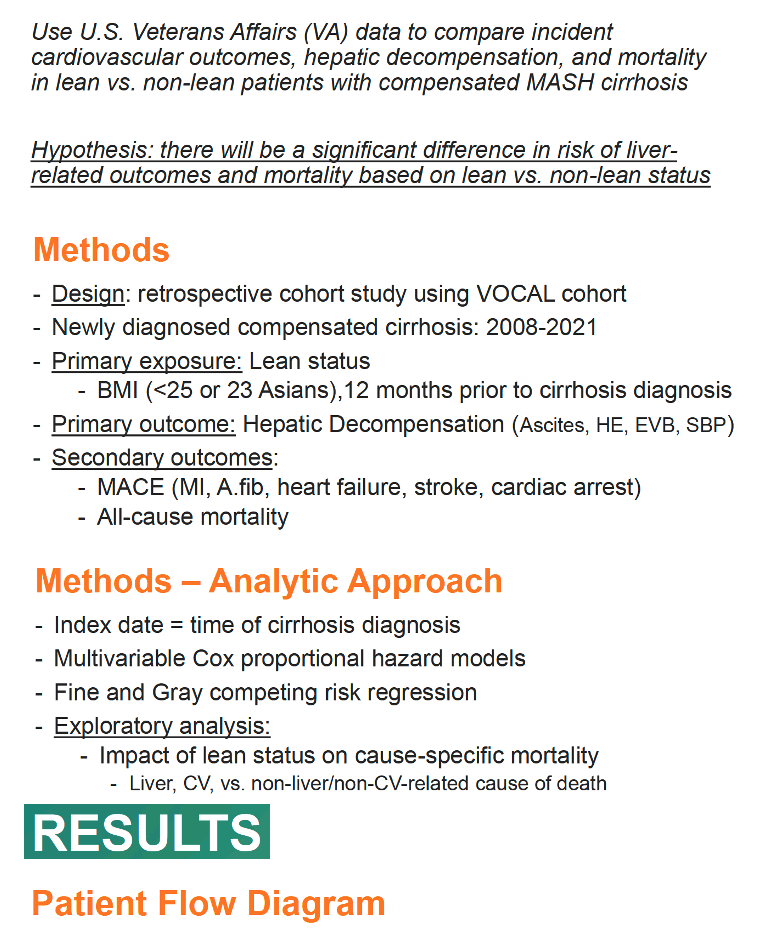
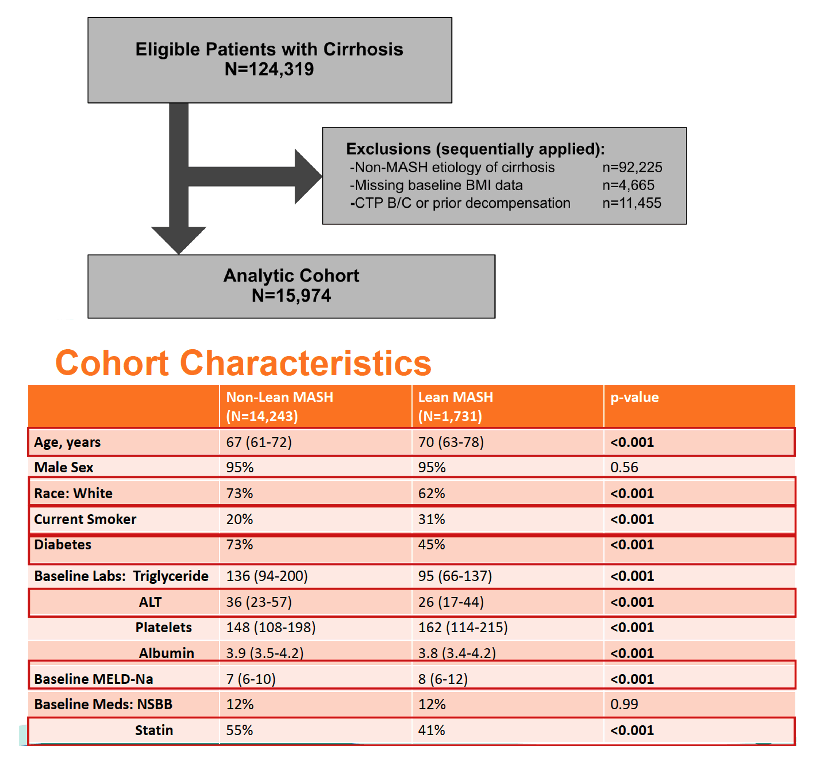
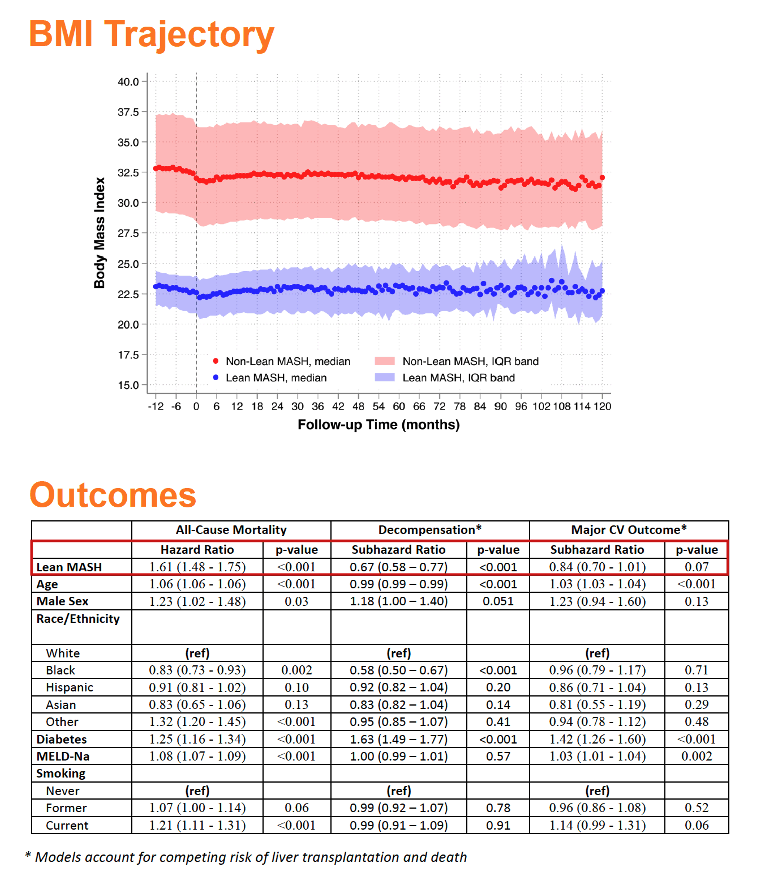
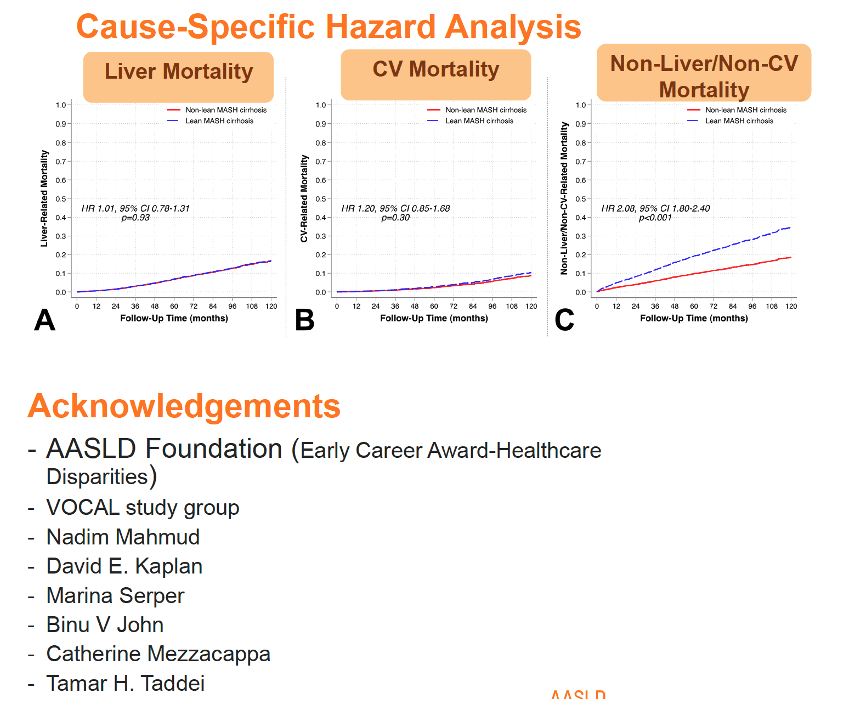
|
| |
|
 |
 |
|
|